 How many times have you had every intention of heading to the gym either before or after work, only to be deterred by nagging back pain? Maybe you woke up feeling stiff and sore, or maybe you had a long day at work and had a flare-up of pain. Either way, you’re far less motivated to be active when in pain, which quickly turns into a slippery slope. Pain is often a signal that something is not right, and your body will likely encourage behaviors that relieve your pain or prevent it from worsening. If your pain increases with movement, the likelihood of you working out becomes very low. The less you move, the better you feel, and voila, your back pain “magically” goes away!
How many times have you had every intention of heading to the gym either before or after work, only to be deterred by nagging back pain? Maybe you woke up feeling stiff and sore, or maybe you had a long day at work and had a flare-up of pain. Either way, you’re far less motivated to be active when in pain, which quickly turns into a slippery slope. Pain is often a signal that something is not right, and your body will likely encourage behaviors that relieve your pain or prevent it from worsening. If your pain increases with movement, the likelihood of you working out becomes very low. The less you move, the better you feel, and voila, your back pain “magically” goes away!
How long will that last, though, until yet another flare-up digs its claws painfully into your spine? Unfortunately, we have yet to discover a sensor for detecting such episodes, but in the meantime we can do everything possible to prevent it from happening. The first step has to incorporate some semblance of movement. I can’t tell you how many times I’ve had a client come to me with a flare-up of pain. Virtually every single time, there is a significant reduction in pain after simply taking some really good breaths and/or actively moving through a safe range of motion. “My back was really achy/stiff/tight/sore/etc. when I came in, but now it feels great!” Some version of this is music to my ears, because now that individual is likely to be far more motivated to complete the workout.
The How
To know exactly what movements or warm-up activities you should be doing, the first step should be to determine whether your pain is something that is chronic (more than a week or two), or extremely severe. In either case, you might need to seek a trusted physical therapist or other healthcare professional to dig a bit deeper into your pain. However, if you’re simply in need of a consistent routine to optimize your warm-up, there are three main activities that can benefit virtually any generally healthy gym-goer.
1. 90/90 Hip Lift (adapted from the Postural Restoration Institute)
- Lie on your back and place your feet flat on a wall, or place your heels on a box of appropriate height. Your knees and hips should be bent to 90 degrees.
- Lift only your tailbone, keeping your back flat against the surface on which you’re laying. Visualize tucking your tail between your legs, as though you are a dog that just got in trouble. You should feel your glutes and hamstrings engage.
- Holding this position, fully exhale through your mouth so as to push your ribs down into your back. You might place your hands on your ribs to better feel them lowering as you exhale. You should feel a very strong contraction in your abdominals, especially on your sides.
- After a full exhale, lightly inhale through your nose, keeping your ribs in the “down” position that you achieved after your exhale. Your goal is to maintain the engagement in your abdominals as you breathe in through your nose.
- Repeat this for 4 to 5 full exhales, and do 2 to 3 sets overall.
KEY POINT: The first priority here is to be in the correct position. If the body parts aren’t aligned properly, the muscles you want to be working won’t have any leverage to work. Feeling your hamstrings and glutes engage along with your abdominals, particularly on your sides, is a good sign you’re in the right position. It’s also entirely possible that you could be in the correct position, but not “feel” either of those areas working. That’s okay, just keep practicing and you’ll start to feel it soon. It never hurts to take a video of yourself just to double-check.
2. Hands and Knees Rib Lift
- Start on your hands and knees, with your palms directly under your shoulders and your knees directly under your hips.
- Tuck your tailbone between your legs, as though you are a dog that just got into trouble.
- Push your palms through the floor or table to spread your shoulder blades, opening up some “space” in your upper back. Your spine will have a moderate curve to it, as pictured, and you should feel your abs around your ribs engage.
- Holding this position, exhale fully out of your mouth as though you are fogging up a mirror.
- Pause for a moment after you finish exhaling, note the activity in your abdominals, and inhale through your nose, keeping your abdominals engaged by pulling your ribs up into your spine.
- Repeat this for 4 to 5 full exhales, and do 2 to 3 sets overall.
KEY POINT: Avoid shrugging your shoulders toward your ears as you push your palms through the floor. You also want to make sure you’re not using those 6-pack abs (rectus abdominus) in this activity. You want to be focused more on the abs attached directly to the ribs, on the sides of your belly. There’s a time and a place for the 6-pack abs, but this is not one.
3. Spiderman Stretch with Rotation
- Start on hands and knees as in the Hands and Knees Rib Lift.
- Bring one foot forward and to the outside of your hand on the same side.
- Keep your forward foot flat, and take your hand on that same side up to the ceiling, reaching long through your fingertips.
- Fully exhale through your mouth as you reach up to the ceiling, inhale through your nose while reaching, then return to start.
- Repeat 8 to 10 times with each arm and leg.
KEY POINTS: Make sure you’re reaching straight up to the ceiling. Don’t rotate for the sake of rotation. Reach long through your fingertips as high as you can while you’re pushing away from the floor with your support arm.
Ask a Trainer
Try these out the next time you have some soreness or stiffness coming into the gym. Even if you don’t, these three activities will very much set the tone for your entire workout if performed properly. As always, if you’re unsure, just ask! Any one of our trainers will be happy to help you out, or find the person who can.
Happy moving!
This blog was written by David Schoch, CSCS, and FMS. To learn more about the NIFS bloggers, click here.


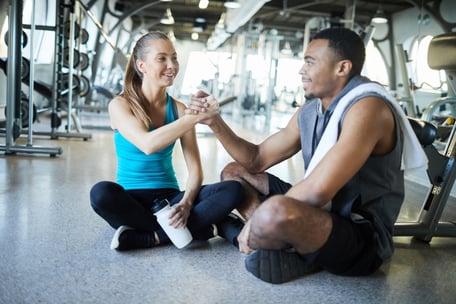 So often in life people like to look at things as win or lose. But what if you switched your perspective to thinking of making progress by winning each day? With this simple shift, your days can be filled with more positivity and success instead of the typical mindset of losing or not being good enough.
So often in life people like to look at things as win or lose. But what if you switched your perspective to thinking of making progress by winning each day? With this simple shift, your days can be filled with more positivity and success instead of the typical mindset of losing or not being good enough.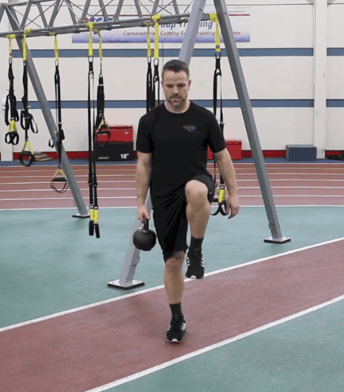 Humans have the ability to become and remain stable throughout any movement, from walking, to lunges, to power cleans. Increased stability typically correlates with increased performance.
Humans have the ability to become and remain stable throughout any movement, from walking, to lunges, to power cleans. Increased stability typically correlates with increased performance.
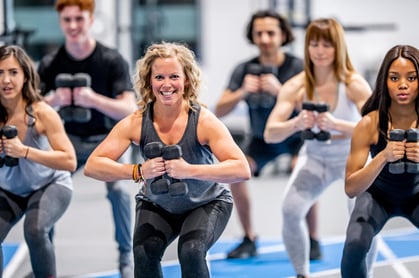 How do you define fitness? Whatever your answer is, it will shape the way you work out, influence the goals you set, and impact your long-term health. Although everyone might have different perceptions of what “fitness” means, the American College of Sports Medicine has defined what
How do you define fitness? Whatever your answer is, it will shape the way you work out, influence the goals you set, and impact your long-term health. Although everyone might have different perceptions of what “fitness” means, the American College of Sports Medicine has defined what  Cycling is becoming one of the most popular trends in group fitness. Not only is it a great class to take for the cardio benefits and calorie burn, cycling is a great resistance-based workout that can also increase strength. Many cycling classes are tracked in two ways, by
Cycling is becoming one of the most popular trends in group fitness. Not only is it a great class to take for the cardio benefits and calorie burn, cycling is a great resistance-based workout that can also increase strength. Many cycling classes are tracked in two ways, by 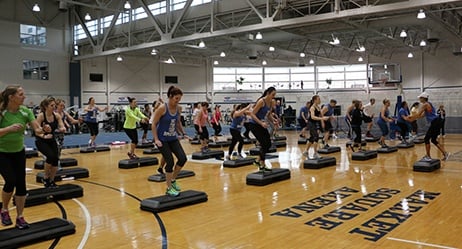 Whether you are 18 or 80, man or woman, looking to lose weight or simply maintain,
Whether you are 18 or 80, man or woman, looking to lose weight or simply maintain, 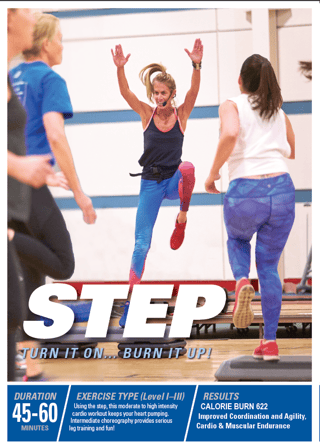
 Every March, the American Academy of Nutrition and Dietetics celebrates
Every March, the American Academy of Nutrition and Dietetics celebrates